When I mentioned in this column a few weeks back that I planned a short series of reviews on the topic of marriage, anyone possessing more than a passing familiarity with the Eclipse Series probably could have guessed that the film I’m writing about this time around would be part of the scheme. I mean, it’s right there in the title – A Married Couple, part of Eclipse Series 24: The Actuality Dramas of Allan King. And as a follow-up to the first two installments in this four-part exploration, A Married Couple builds logically upon the themes of its predecessors. One Hour With You took a comical, light-hearted look at the temptations of infidelity, while Street Without End examined the tensions between a mismatched couple who got together for the wrong reasons, only to discover after the marriage had taken place that their ideals had misled them and they really weren’t right for each other.
Both of those films were set in the 1930s, but even after leaping forward more than thirty years into the late 1960s milieu of Toronto, where A Married Couple was filmed, we see that both of those marital strains, cheating and incompatibility, were just as potent then as they were earlier in the century, and the situation hasn’t changed all that much today. Despite the on-going evolution of relationship and cultural models that set the norm for 21st century couples, the underlying conflicts, and the emotions they stir up, hold tremendous power to cause strife and confusion as well as strong attraction and codependency between two people who, for whatever reason, find themselves in love with each other.
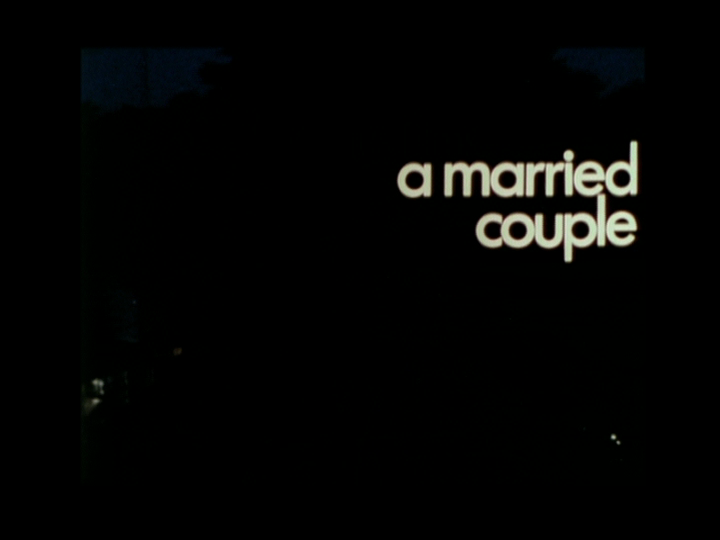
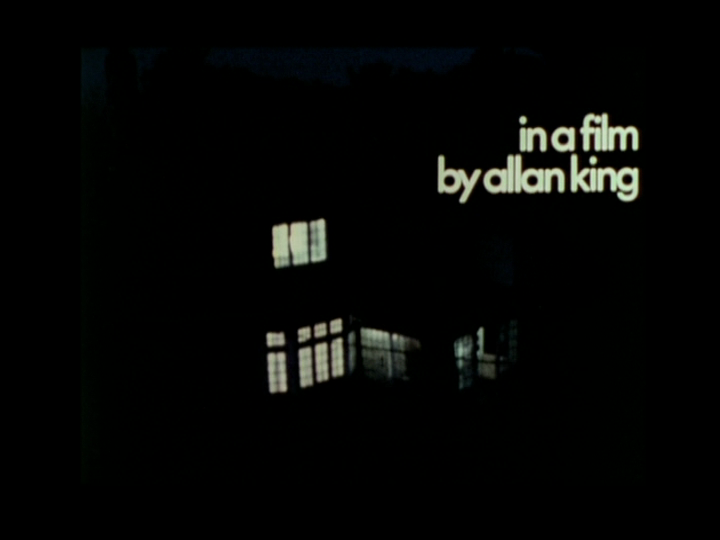
Allan King’s “actuality drama” format makes A Married Couple a particularly fascinating specimen to study for any cinephile looking for insight into what makes long-term monogamous relationships thrive (or not.) Billy and Antoinette Edwards, their son Bogart and their dog Merton were a real family, not actors working from a script. Plucked from moderately affluent middle-class Canadian suburbia, Billy and Antoinette worked up the nerve to put their private lives on display long before the commercialized voyeurism and relatively cheap production values of today’s reality TV became such a staple of popular entertainment. Even though Mr. and Mrs. Edwards were subject to skeptical assumptions about the extent to which they were performing for the cameras when the film first came out in 1969, I admire the boldness and creative urgency that compelled them to be part of this experiment. It’s impossible to watch A Married Couple and not see how deeply embedded it is in the post-hippie era zeitgeist, where the quest for authenticity and new freedoms of expression led to both brave innovations and naive, desperate gimmickry in interpersonal expression. Allan King’s supremely intrusive, unblinking camera captures both ends of the spectrum as Billy and Antoinette reveal things about themselves that are remarkably gutsy but also capable of inducing “what were they thinking” cringes of the highest magnitude.

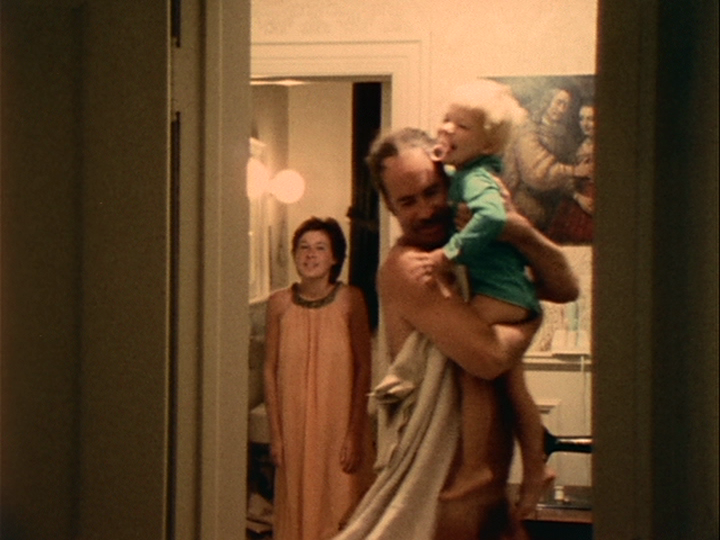
As the film opens, we immediately meet Billy and Antoinette, with no more backstory or introduction than the appearance of their names on the opening credits (King never uses a narrator or on-screen text to orient the viewer or supply context.) They’ve just concluded a social encounter, seeing their guests to the door and now ready to unwind after an evening spent playing host and hostess. Almost immediately, sparks of tension begin to fly, innocuously enough at first as a petty dispute over a pair of uncomfortable shoes quickly escalates into a more serious disagreement over money and their different ideas of appropriate interior decor. She considers a harpsichord an essential part of a well-appointed home, while he thinks that’s an absurd notion; later on, her suggestion for “Moorish arches” in the kitchen will rekindle that blaze in another argument over domestic aesthetics.
But as with most household bickering, once each party has had their say, there’s simply little more to be said and they drop the matter for a while. We then see Billy signal his erotic intentions as the couple heads to bed, but Antoinette just wants to read a magazine before lights out time. I’m not sure just how far Billy was looking to push things with a camera crew standing by to catch whatever happened, but it doesn’t really matter because Antoinette has other priorities – it’s time to sleep. Cut to breakfast in the morning, where we see the couple waking up in separate beds… in separate rooms.

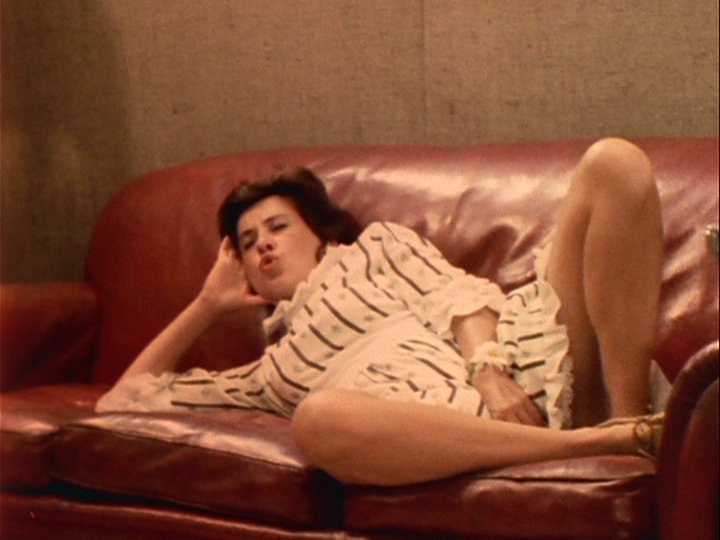
The vibe in the Edwards’ home is extremely laid back as their clothing-optional lifestyle is not at all hindered by the presence of a film crew following them around. Clearly there’s an exhibitionist streak that led Antoinette and Billy to volunteer themselves for the project, and even though they do a good job of never overtly pandering to the audience they know will eventually watch the movie they’re making, one has to consider that their awareness of being recorded has an effect on what they say and how they choose to say it. It’s not possible to avoid self-consciousness that thoroughly, though it’s reported that King shot over 70 hours of footage over 2 1/2 months, enough time for them to get used to this level of accompaniment they’d have while going about their daily lives and capturing these intimate, ephemeral moments for posterity.
This trailer, despite its terribly low resolution, offers a great sample of highlights that, if they grab you, are amplified and fleshed out almost to the snapping point, over the course of 96 (strategically edited) minutes in the life of A Married Couple.
[youtube http://www.youtube.com/watch?v=r6NxQnHP8j4&version=3&hl=en_US]
The surface attractions of a film like this are many: the vintage middlebrow psychobabble and pop-cultural grooviness of the dialog are priceless; the kitschy fashions, furnishings and accessories invoke smiles; there’s a raw novelty and candor here that is practically impossible to replicate in an era where ubiquitous self-promoting video snippets and pre-fabricated game show set-ups have drained the spontaneity from postmodern attempts at cinema verité; and for people who either grew up in the 60s and lived through similar encounters, or whose lives were forever impacted by the personal ramifications of that decade’s social experiments, the appeal to nostalgia is palpable. But a repeat viewing or two allows the initial shock, surprise, amusement, what have you, to wear off so that Billy and Antoinette, despite all their obvious hang-ups, blind spots and shortcomings, become more like real people and less like wacky characters who cause us to gasp, smile and wryly shake our heads.
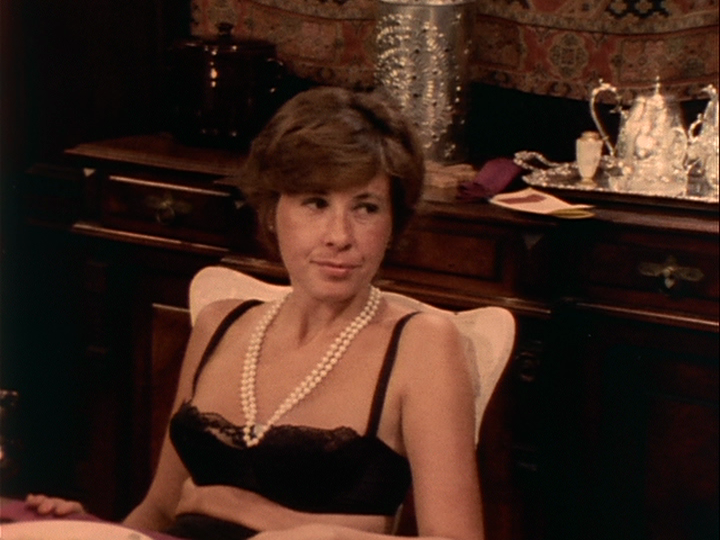
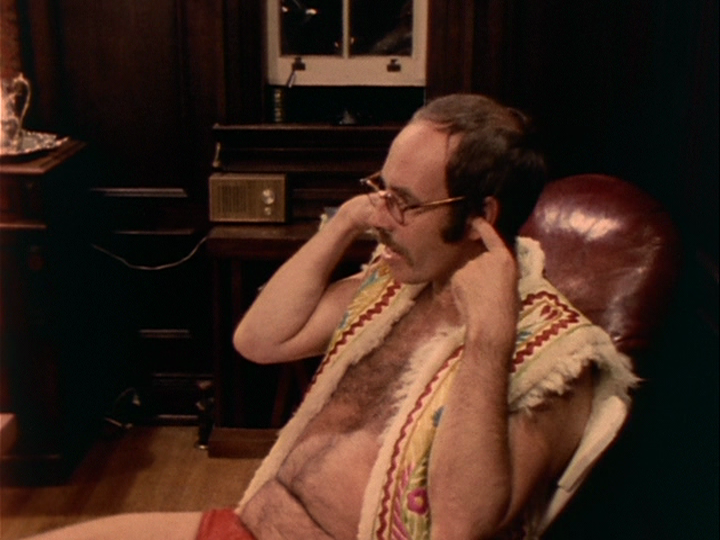
That’s especially the case if you’re a person who’s been married or in a seriously committed relationship for a long enough time to recognize the patterns and dysfunctions that overshadow the genuine affection that Billy and Antoinette feel toward each other. In my case, I’ve been married 26 years, well beyond the point in life and love that these two were at. In our own way over those years, my wife and I have weathered similar storms as those that afflict this couple. As one offhand comment leads to a snippy retort that in turn generates a passive-aggressive, multi-layered insult that’s responded to with teeth-clenched cruelty or simmers over into a hard-boiling eruption of cussing and mockery, the effect is not all that different than watching an engrossing suspense film or scary movie, with the audience helplessly gripping the arm-rest warning them “Don’t go there!,” to somehow help them undo or avoid the pointless damage that their sharply barbed words inflict.
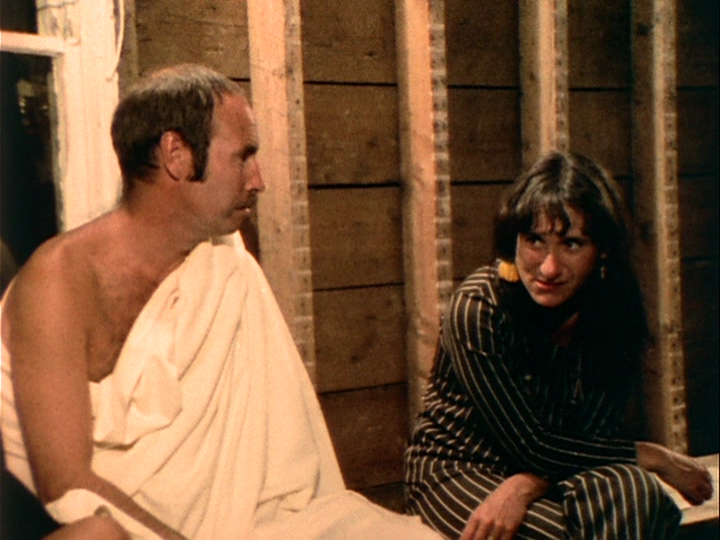
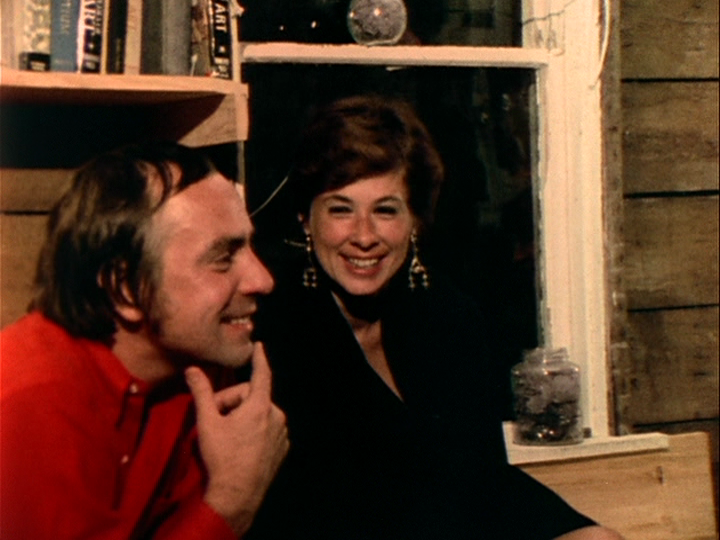
But we are after all just passive spectators to a marriage relationship that is deeply troubled, and both partners know it. They are bound by habit, by shared material needs, by a child, a history together, the elusive but dwindling prospects that things might still get better between them in the future. It’s a horror-inducing situation that many couples have had to find their way through, only complicated by the fact that real life seldom offers us the laboratory-like vacuum to work out our problems with no interference from the outside, or from our own desires. The images above capture Billy and Antoinette at the same party, each attired quite incompatibly for reasons that are never quite explained, him in a toga, her in a smart black party dress, nicely made up and apparently just a little bit on the prowl for attention from males other than her husband. Though no prolonged investigations of either partners extra-marital affairs (real or suspected) takes place in A Married Couple, there are enough hints of cuckoldry and sexual frustration to add that particularly vexing complication into the mess that Antoinette and Billy somehow have to resolve.
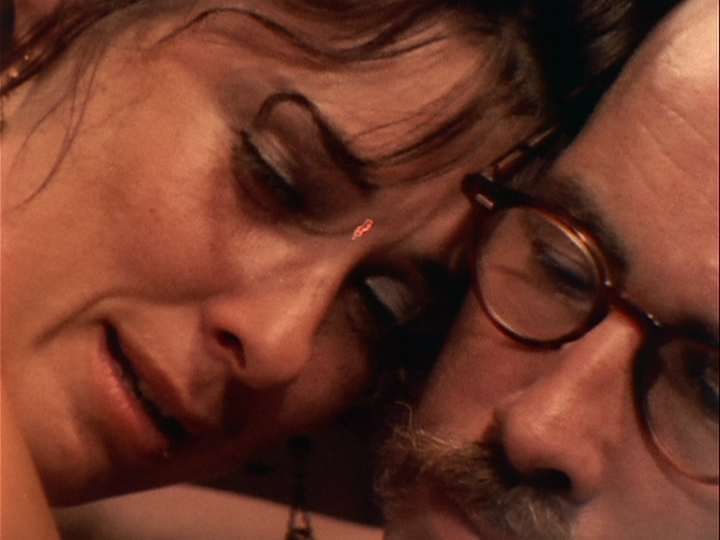
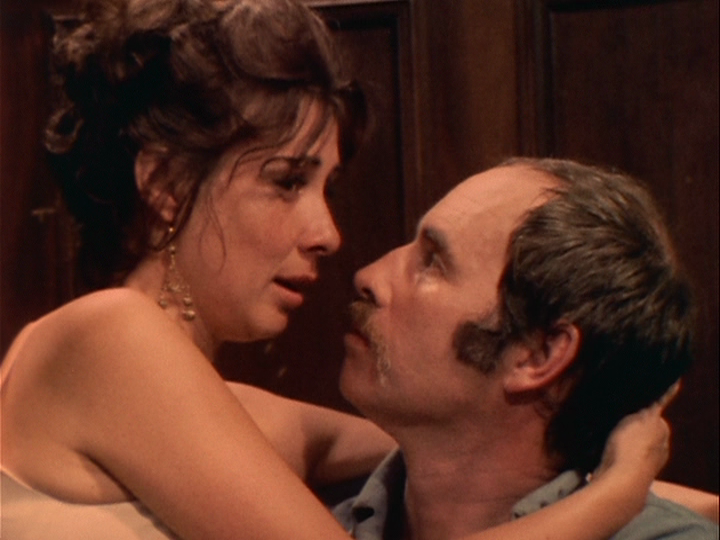
And that leads us to the final third of the film, after we’ve been drawn in (or perhaps repulsed but still awkwardly fascinated) by these two intelligent, sensitive but pitifully mixed-up souls. As I reflect on the era in which this film was made, I can’t help but draw comparisons to another famous (and now more or less supressed) documentary from the same year: The Beatles’ Let It Be, which also began with presumably idealistic notions (“We’ll get together and just shoot a film that really tells it like it is, no overdubs, just capturing the reality of what’s going down… it’ll be far out, man!”) only to wind up in the appalling realization that what’s been caught on film was the death of a band, or a marriage, as the case may be. Billy and Antoinette, now too deep into the project to just call it off, but unable to back-pedal their way into a happier state of mind or understanding with each other, now have to confront the dismal reality that despite the good times they’ve shared, and the hassles that accompany divorce, they really just may not be able to make it together.

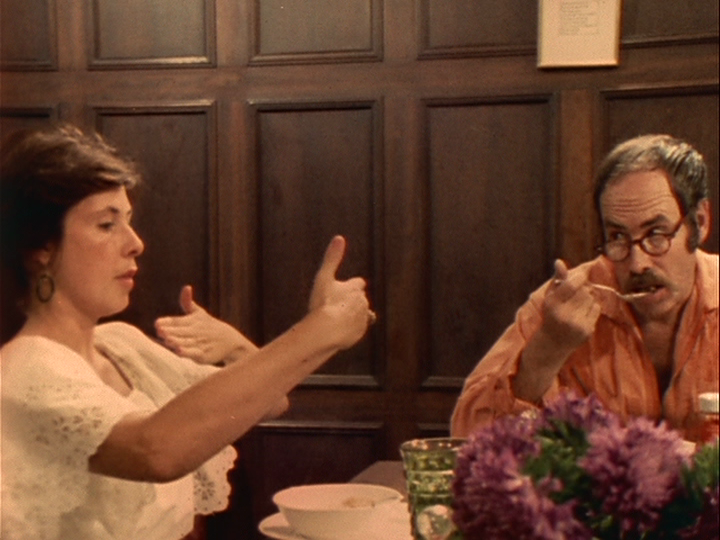
We never get a resolution in the film as to where they’ll wind up, just an unrehearsed demonstration of mediocre conflict resolution skills that are insufficient to tackle the problem at hand. Each line of dialog that unfolds demonstrates each partner’s underlying intention of one-upping the other, the points made in their own self-defense subtly (or not so subtly) also serving to undercut and invalidate the point that their lover/adversary just made. Driven by insecurity, starved for affirmation, aiming for some lasting, final demonstration of superiority in the relationship, Billy and Antoinette poignantly act out the lethal trap that causes so many marriages to founder on the rocks of irreconcilable differences.
But as I say, we don’t actually see it get to that point, and the film is so much the better for it, because after all the anguish and disappointment, and yes, even the frequent bouts of laughter that also serve as a helpful tension reducer, it’s fitting to wind up on a note of reconciliation, as tenuous and temporary as we know it ultimately must be. Whatever happened to Billy and Antoinette Edwards, their son Bogart and their dog Merton after the Klieg lights were turned off and the film crew went away, A Married Couple is still a movie, after all, and we the audience still cherish the hopes of a happy ending, or if not that, at least a hug that will make everything feel just a little bit better.
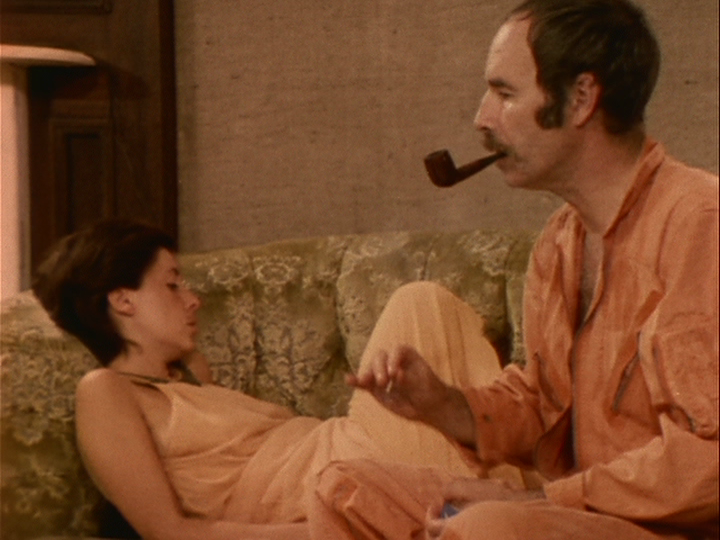

Post-script: This next clip isn’t part of A Married Couple per se, but will be of interest to anyone who’s seen the film and cares at all to know whatever became of them and their family. In it, an older Antoinette from more than 30 years later gives us some of that back story of the film and fills us in on what happened next. I recommend that you watch the original film first to avoid some of the spoilers that Antoinette drops here, and better appreciate the dramatic tension that she, Billy and Allan created in this compelling slice of life from 42 years ago, that still speaks profoundly to us today.
[youtube http://www.youtube.com/watch?v=_x8IsGjGZ0o&version=3&hl=en_US]


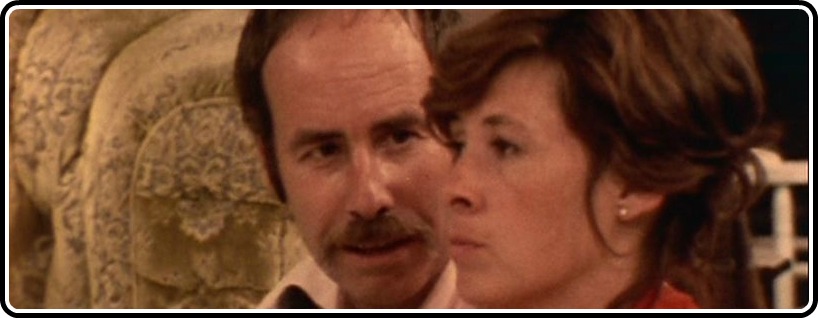

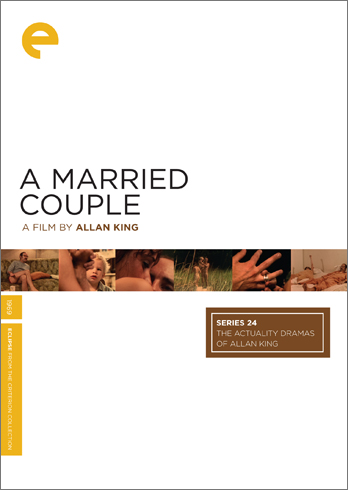

![Bergman Island (The Criterion Collection) [Blu-ray]](https://criterioncast.com/wp-content/uploads/2022/11/bergman-island-the-criterion-collection-blu-ray-400x496.jpg)
![This Is Not a Burial, It’s a Resurrection (The Criterion Collection) [Blu-ray]](https://criterioncast.com/wp-content/uploads/2022/11/this-is-not-a-burial-its-a-resurrection-the-criterion-collection-blu-ray-400x496.jpg)
![Lars von Trier's Europe Trilogy (The Criterion Collection) [The Element of Crime/Epidemic/Europa] [Blu-ray]](https://criterioncast.com/wp-content/uploads/2022/11/lars-von-triers-europe-trilogy-the-criterion-collection-the-element-of-400x496.jpg)
![Imitation of Life (The Criterion Collection) [Blu-ray]](https://criterioncast.com/wp-content/uploads/2022/11/imitation-of-life-the-criterion-collection-blu-ray-400x496.jpg)
![The Adventures of Baron Munchausen (The Criterion Collection) [4K UHD]](https://criterioncast.com/wp-content/uploads/2022/11/the-adventures-of-baron-munchausen-the-criterion-collection-4k-uhd-400x496.jpg)
![Cooley High [Criterion Collection] [Blu-ray] [1975]](https://criterioncast.com/wp-content/uploads/2022/11/cooley-high-criterion-collection-blu-ray-1975-400x496.jpg)